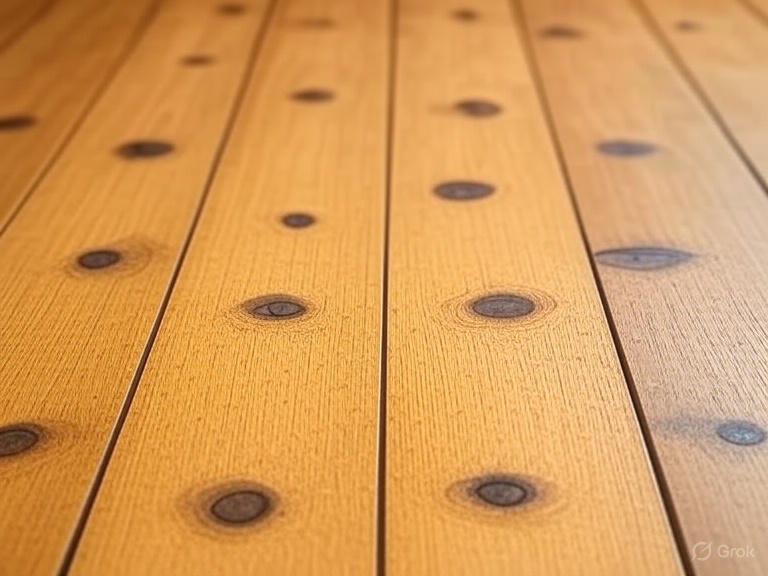
October 01, 2025 - Zed van der Vyver
Introduction to Flooring in Thailand
Flooring is a crucial element in Thai homes and buildings, providing a foundation that withstands the tropical climate’s heat, humidity, and monsoons. It’s not just about aesthetics—it ensures comfort and durability. This blog will explain why flooring matters in Thailand, the different types for various needs, how they’re made, and what they might cost. No construction expertise required—just clear info to help you choose the right flooring for your space!
Why Flooring Is Essential in Thailand
Flooring provides a stable, safe surface for walking and living while protecting underlying structures. In Thailand, where temperatures often exceed 35°C in Bangkok or Chiang Mai, it keeps interiors cooler and resists moisture from monsoons, a concern in flood-prone areas like Ayutthaya. It also prevents pest infestations, common in humid climates, and adds value with stylish finishes. Whether in a rural villa or an urban condo, proper flooring enhances comfort, hygiene, and property appeal.
Types of Flooring for Different Scenarios in Thailand
Flooring varies by material and purpose, and the right type depends on your climate and usage. Here’s a look at common types in Thailand and where they fit best:
Ceramic Tile Flooring
Use: Kitchens or high-traffic areas.
Why: Durable, water-resistant, and cool underfoot, it’s ideal for Thailand’s wet and hot conditions.
Example Scenario: A home in Nonthaburi.
Teak Wood Flooring
Use: Living rooms or traditional homes.
Why: Made from local teak, it’s strong and naturally resistant to humidity if sealed properly.
Example Scenario: A villa in Chiang Rai.
Vinyl Flooring
Use: Budget homes or rentals.
Why: Affordable and water-resistant, it mimics wood or tile and suits humid environments.
Example Scenario: A condo in Phuket.
Concrete Flooring
Use: Garages or industrial spaces.
Why: Tough and low-maintenance, it handles heavy loads and resists moisture.
Example Scenario: A warehouse in Chonburi.
Your choice depends on moisture exposure, foot traffic, and design preferences. Thai brands like Cotto or local suppliers offer tailored solutions.
How Flooring Is Made in Thailand
Flooring in Thailand is crafted to endure the tropical climate while meeting aesthetic and functional needs. Here’s a general overview of the process:
- Material Selection: Ceramic uses clay, teak is sourced from plantations, vinyl is extruded from PVC, and concrete mixes cement with aggregates.
- Processing: Ceramic tiles are pressed and fired, teak is cut and planed, vinyl is rolled into sheets, and concrete is poured into slabs.
- Finishing: Tiles are glazed for water resistance, teak is sanded and sealed, vinyl is printed with patterns, and concrete is polished or stained.
- Installation Prep: Subfloors are leveled, with waterproofing added in wet areas like bathrooms.
- Installation: Tiles are grouted, wood is nailed or glued, vinyl is adhered, and concrete is cured with controlled moisture.
Local factories in Saraburi produce ceramic and vinyl, while teak flooring is often crafted in northern workshops.
Cost Comparison of Flooring in Thailand
Flooring costs in Thailand vary by material, area, and installation. Here’s a breakdown (in Thai Baht per square meter, as of October 2025):
| Flooring Type | Cost (THB per sqm) | Typical Use | Notes |
|---|---|---|---|
| Ceramic Tile | 200–500 | Kitchens | Durable; grouting adds labor cost. |
| Teak Wood | 1,000–3,000 | Living rooms | Premium; sealing and maintenance add expense. |
| Vinyl | 150–400 | Rentals | Low cost; easy to replace. |
| Concrete | 300–800 | Garages | Low upkeep; polishing increases cost. |
Example Calculation: A 20 sqm ceramic tile floor might cost 4,000–10,000 THB, while teak wood for the same area could be 20,000–60,000 THB. Installation adds 200–600 THB per sqm, higher in cities like Pattaya. Prices are up 10–15% since 2020 due to material costs.
Final Thoughts
Flooring in Thailand provides a durable, comfortable base tailored to the tropical climate’s challenges. Whether ceramic for a kitchen or teak for a traditional home, there’s a type for every need. Consider your moisture exposure, traffic levels, and budget, and consult local suppliers for the best fit. Good flooring is the foundation of a livable space. Got questions? Leave a comment—we’re here to help!
